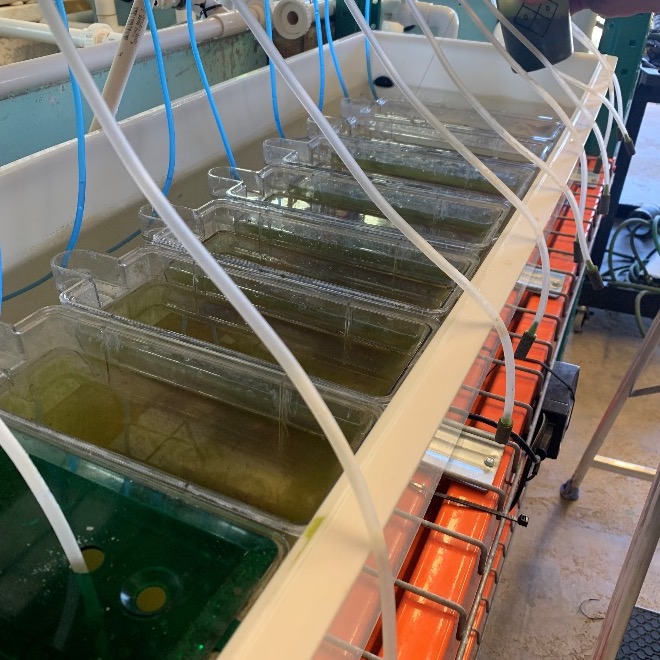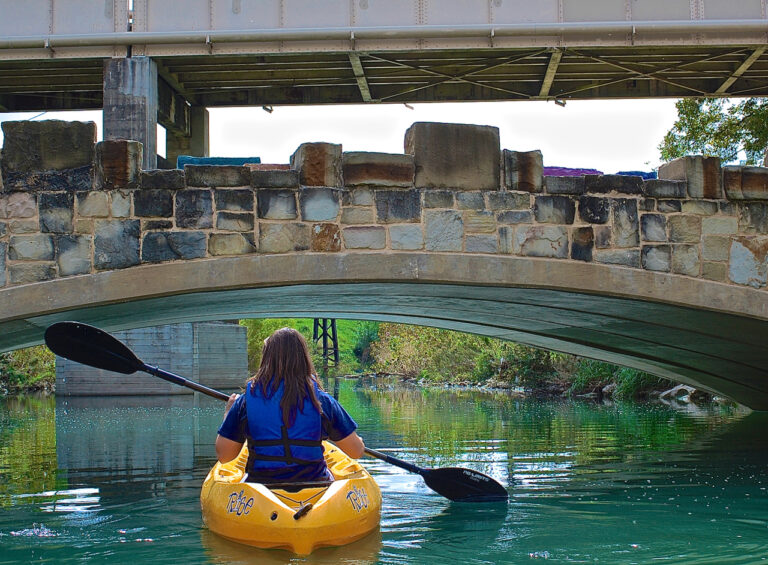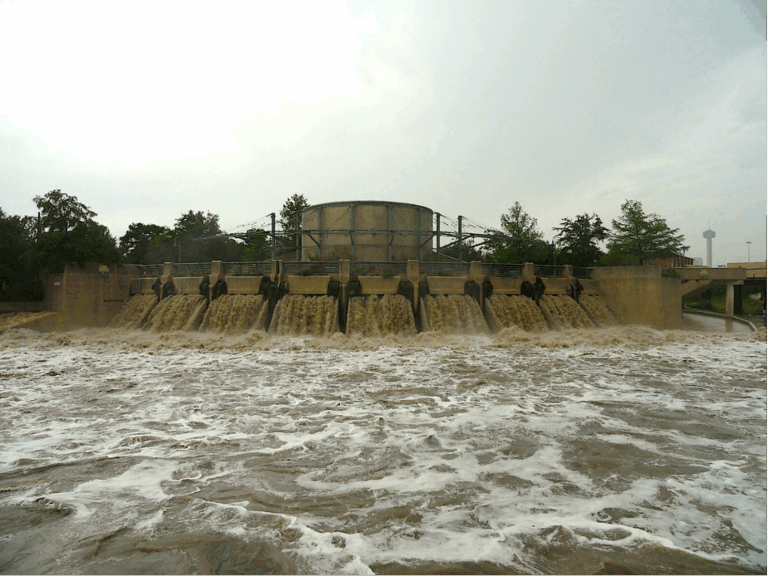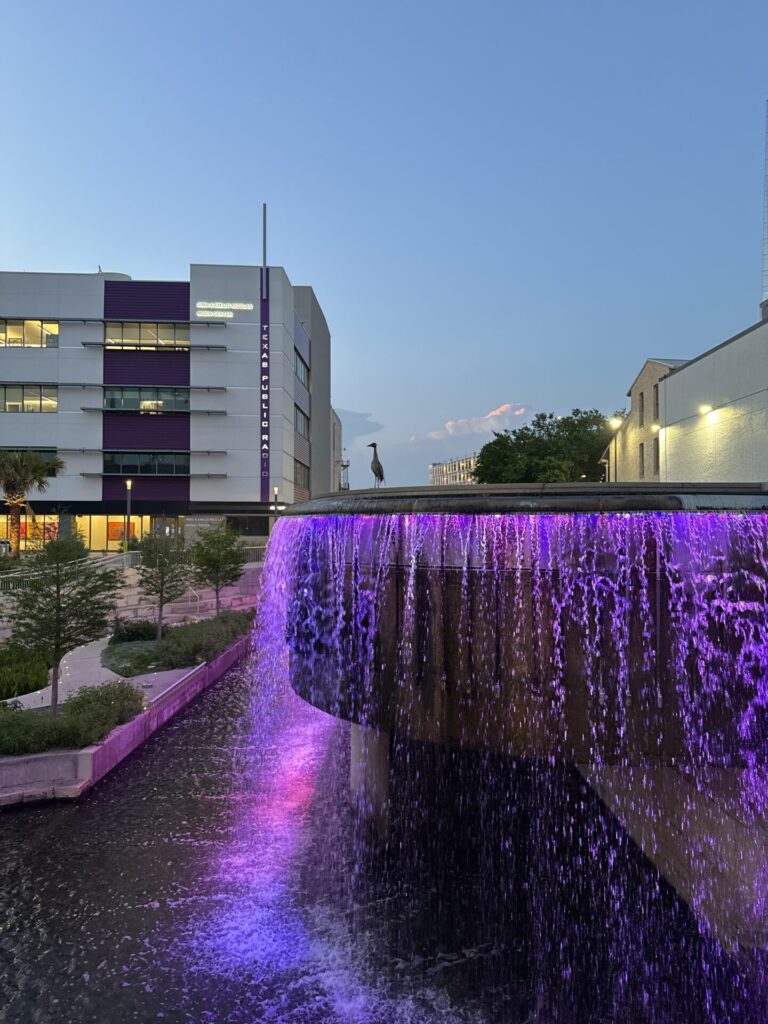Estimated Reading Time: 5 Minutes
San Antonio River Authority (River Authority) aquatic biologists are preparing for a native freshwater mussel reintroduction in the Mission Reach of the San Antonio River Walk. Freshwater mussels were historically found throughout the upper reaches of the San Antonio River. Unfortunately, urban development, channel modifications, and pollution prevented mussels from surviving and reproducing. However, with the success of the Mission Reach Ecosystem Restoration and the recent increase in fish, bird, and vegetation diversity along the river, it is time to add four species of freshwater mussels to the mix!
Freshwater Mussel Lifecycle
You may recall that freshwater mussels have a fascinating and surprising lifecycle from our previous blog—San Antonio River’s Freshwater Mussels: Why you should love them! Freshwater mussel eggs are fertilized internally and develop into parasitic larvae called glochidia. The female mussel releases these glochidia into the water column, where they must attach to a host fish’s gills, fins, or skin and metamorphose into juvenile mussels. After a period of weeks to months, the newly transformed juveniles will drop off the fish and sink into the sediment to grow into adult mussels.
The freshwater mussel life cycle—Artwork courtesy Texas Parks and Wildlife Department
The Recipe to Make Freshwater Mussels!
River Authority biologists are collaborating with the U.S. Fish and Wildlife Service at Inks Dam National Fish Hatchery (IDNFH) to propagate, or reproduce by natural processes, four species of freshwater mussels: Pimpleback (Cyclonaias pustulosa), Yellow Sandshell (Lampsilis teres), Pistolgrip (Tritogonia verrucosa), and Threeridge (Amblema plicata).
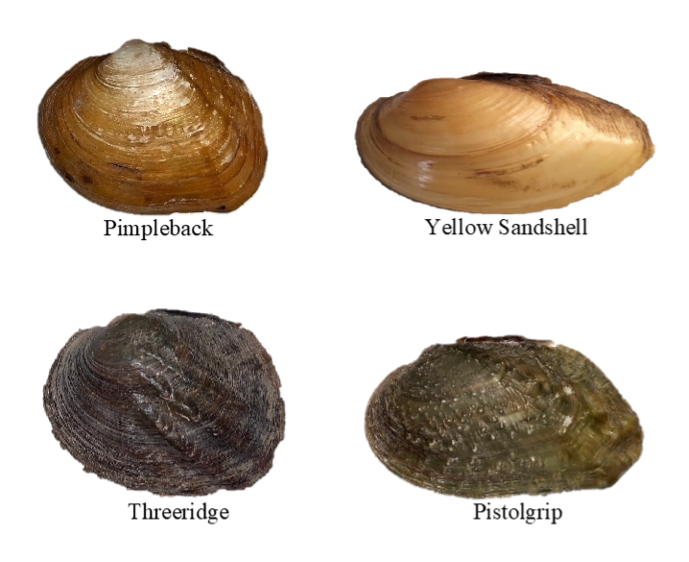
The four freshwater mussel stars of the “Native Mussel Reintroduction” show!
The staff at IDNFH must mimic the mussel’s natural life cycle requirements to produce the new juvenile mussels. Sound complicated? Well, there is no need to “mussel” your way through this recipe. Check out these three steps to produce freshwater mussels.
Step 1. Attach glochidia to host fish
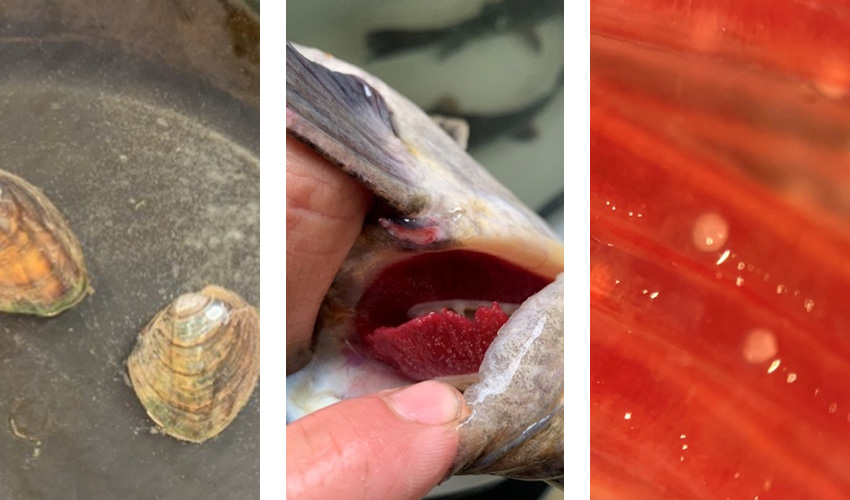
Female Threeridge with released glochidia Center: Flathead catfish (Pylodictis olivaris) gills with encysted glochidia Right: Encysted glochidia on gill filaments under a microscope
Attaching glochidia to the host fish’s gills is the first step in breeding mussels. Once the female releases her glochidia, they are carefully collected with a pipette and counted under a microscope to determine concentration. There can be tens to hundreds of thousands of glochidia released by a single female! Next, glochidia are placed in an aerated bucket with the host fish for half an hour to a few hours, depending on the concentration of glochidia. Glochidia can even be pipetted directly onto fish gills to ensure attachment.
If the mussel’s host fish is unknown, the glochidia can be grown in Petri dishes in a process called in vitro propagation! In vitro propagation bypasses the host fish requirement and allows more control over the metamorphosis process. Culture media, a nutrient solution used to support cell growth, is created to enable the glochidia to transform and develop.
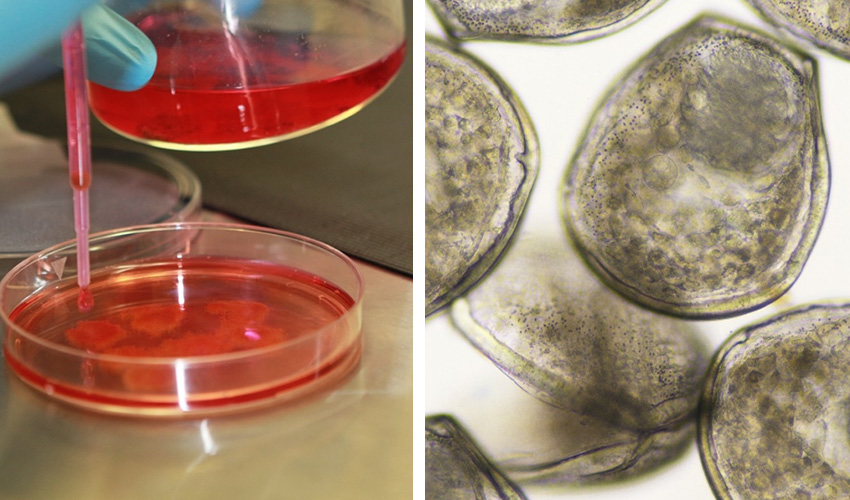
Pipetting mussels to the in vitro culture dishes—Photo Courtesy U.S. Fish and Wildlife Service,(Jacqualun [CM1] [ER2] Halmbacher, USFWS) Right: Yellow Sandshell glochidia at day one of in vitro propagation—Photo Courtesy U.S. Fish and Wildlife Service,(Jacqualun Halmbacher, USFWS)
Step 2. Collect the Drop-Offs
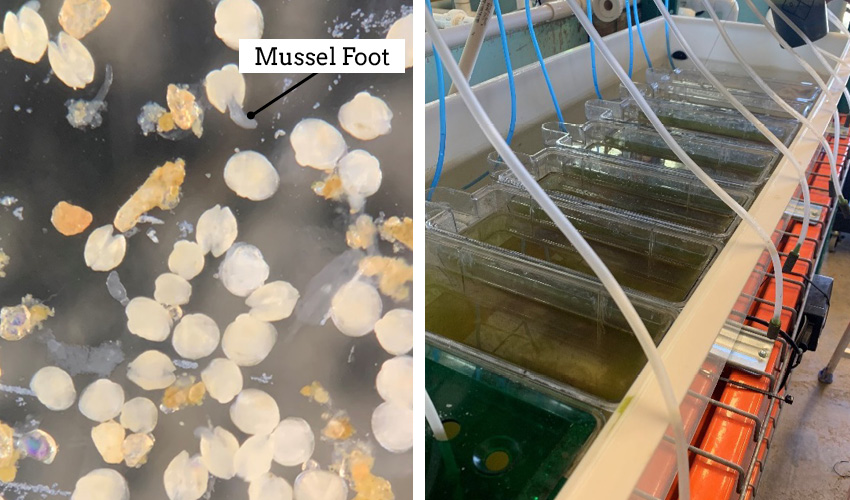
Pistolgrip juveniles from a flathead catfish Right: Holding tanks at IDNFH for drop-off and juvenile mussels
After glochidia metamorphose into juvenile mussels, they break free and drop off their host fish. The drop-offs are collected on a fine mesh screen, carefully sieved to remove debris, and then counted under a microscope. At this stage, the mussels have a fully developed foot and use it to explore their new environment. They are then placed in small containers within the holding tanks. These tanks have fine sediment on the bottom to provide habitat and food for the juvenile mussels. The mussels are fed algae twice daily, and freshwater is exchanged on a timer.
Step 3. The Grow-Out
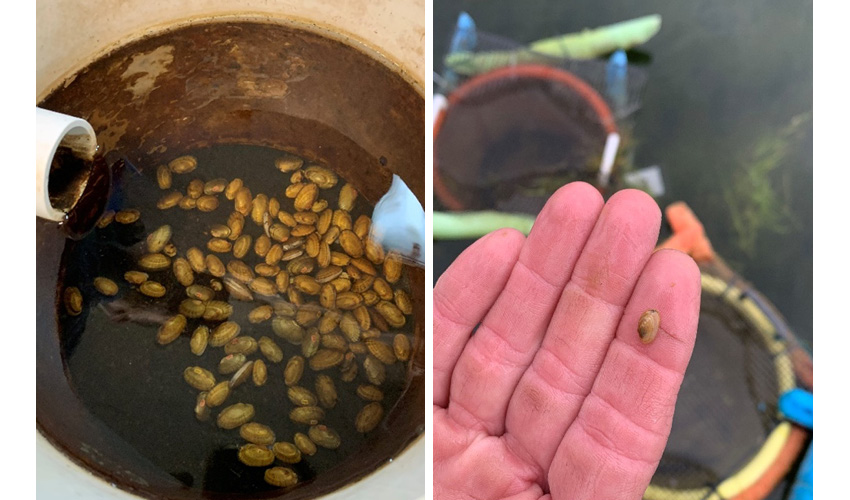
An upweller system housing Texas Fatmucket (Lampsilis bracteata) Right: Floating baskets housing Yellow Sandshell mussels in a pond at IDNFH
Once mussels are large enough, they are moved from the static tank system to various grow-out systems. Mussels can be grown in the hatchery, where there is more control over their environment, or in a more natural setting like a pond. In the wild, habitat preference can vary from species to species. Therefore, each species of mussel may prefer different types of grow-out systems. Upwellers, floating baskets, and raceways are some examples of grow-out systems. Once mussels reach around 20 mm in length, they are ready for stocking in the river!
Floating Basket Growth and Survival Study
River Authority biologists designed a floating basket study to compare the growth and survival of propagated Yellow Sandshell in three separate bodies of water. Mussels will be placed in baskets in the San Antonio River, a private pond, and an IDNFH pond to monitor growth monthly. The results of this study will inform IDNFH staff and River Authority biologists about the best location to grow juvenile mussels before stocking them in the Mission Reach.
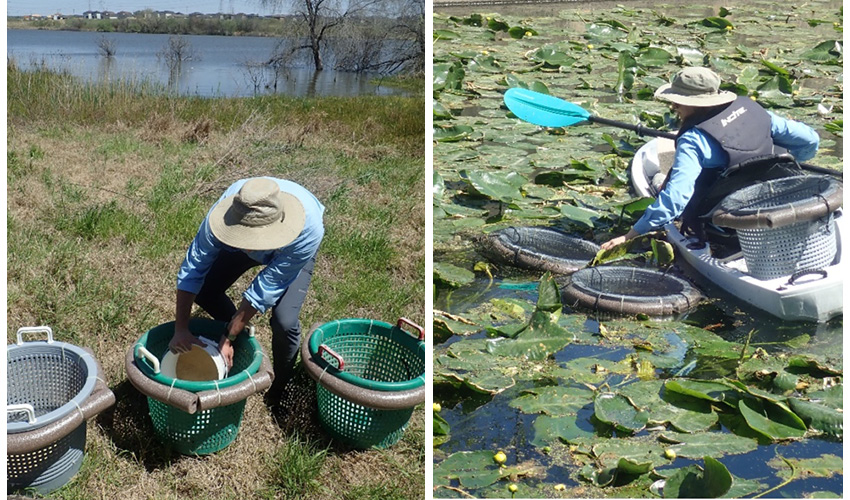
Adding sand substrate to the floating baskets before deploying them in a private pond Right: Deploying freshwater mussel baskets in the San Antonio River
The upcoming freshwater mussel reintroduction to the Mission Reach section of the San Antonio River is yet another reason to #BeRiverProud! The return of four native species of mussels will increase species diversity, making a healthier ecosystem within the San Antonio River Watershed.
You can help keep the San Antonio River and our future mussels healthy by properly disposing of your litter and taking the pledge—Don’t Let Litter Trash Your River.
Stay tuned for…
- Floating Basket Growth and Survival Study updates: Which experimental site is best suited to the mussels?
- Freshwater mussel floating basket signs and the launch of the mussel info on the River Authority website
- Habitat Suitability Modeling
The River Reach is back!
River Reach is a quarterly, 12-page newsletter that is designed to inform the San Antonio River Authority’s constituents about the agency’s many projects, serve as a communication vehicle for the board of directors and foster a sense of unity and identity among the residents of Bexar, Wilson, Karnes, and Goliad counties.
If you wish to be placed on the mailing list for River Reach, please contact us or complete the form.

